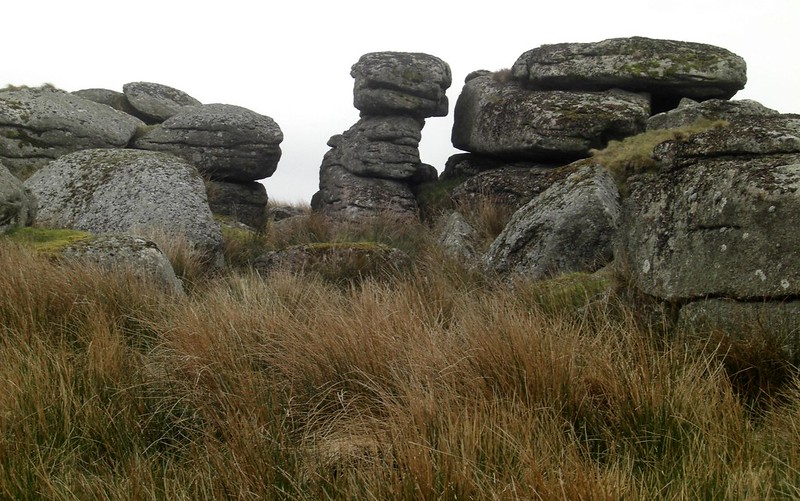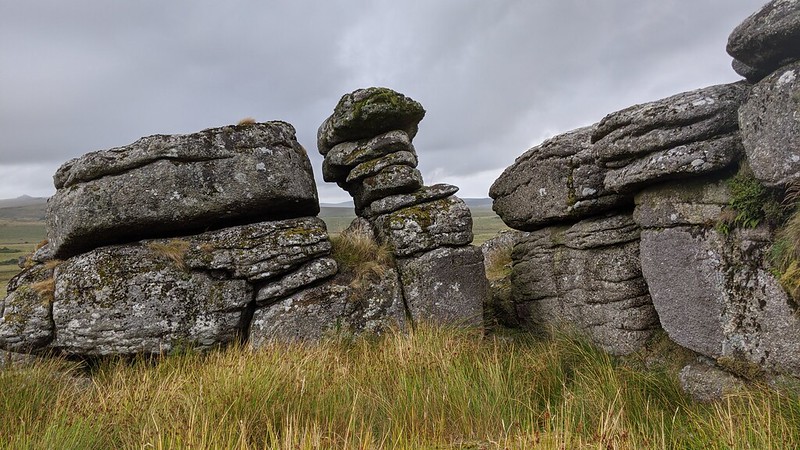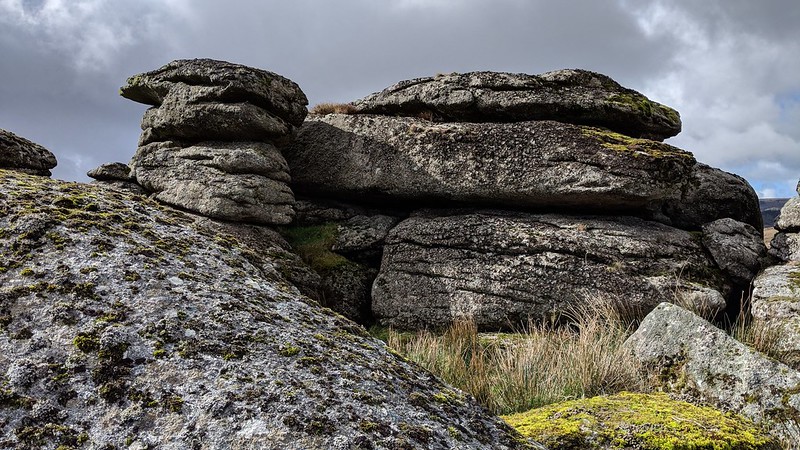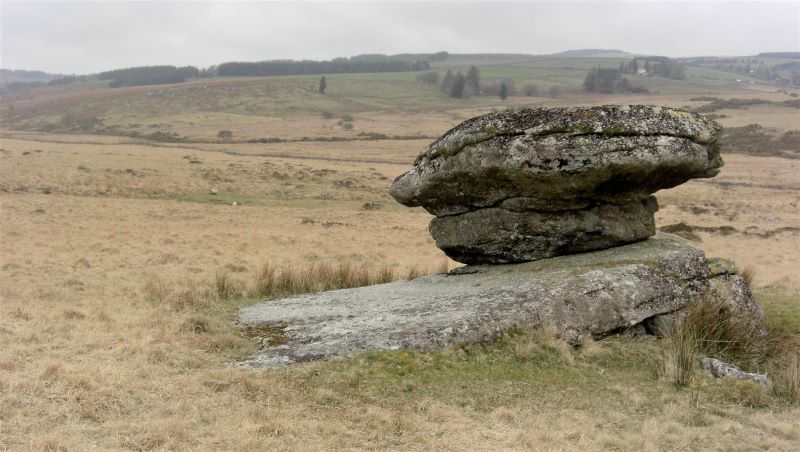TORS OF DARTMOOR
a database of both lesser- & well-known rocks and outcrops
Blakey TorBlackbrook Tor, Blackey Tor, Blakeley Tor, Colden Tor (Crossing), Courton Tor, La Blaketor  This is a very large granite tor overlooking the Blackbrook River to the north that, despite its size, did not appear on OS Maps until its inclusion in March 2023 thanks to Max Piper's involvement. Until then it was one of the most glaring tor omissions. Nearby is a poised rock, possibly an unrecorded logan stone, which resembles a giant mushroom.  Called Colden Tor by William Crossing (1909), Eric Hemery (1983) summarises the confusion; "This comprises the clitter and piles of Blakey or Colden Tor (1,200 feet), which in a document of 1291 appears as La Blaketor. Did Crossing actually trouble to visit the tor, I wonder? His sole reference to it in his Guide is as 'The small pile of rocks which seem to have formerly borne the name of Colden Tor'. The tor admittedly appears relatively uninteresting to the distant viewer - from the B3357 road for example - but on closer acquaintance becomes impressive."  It seems that the tor by a slightly different name often featured in the accounts of the annual Hunting Week in the Western Morning News. One extract from May 1st 1896 under the heading 'Dartmoor Harrier Hunt Week - A Clinking Run' reads as follows "'Puss' was making away for Blakeley Tor when she was headed by some young and impetuous followers of the hunt and turned sharp to the right towards Whiteworks", Puss or 'Old Puss' along with 'Jack' being 19th Century nicknames for a hare on Dartmoor. Blakey Tor is shown on a map in a report by Arthur B. Prowse as 'Blackbrook Tor', a name certainly derived from the river below. It is strange that a near neighbour, Round Hill Tor, should not be marked, however.  In 1901, writing just a few years before the publication of Crossing's Guide to Dartmoor, Arthur B. Prowse described a nearby prehistoric feature: "The only remaining object to mention now is another kistvaen, which is on the other side of the Blackabrook, and eighty yards south of a footpath along the side of Royal Hill from Bachelor's Hall to Moorlands, near a small unnamed cluster of boulders, which may perhaps be distinguished as Blackabrook Tor. There are small remains of the enclosing barrow. The four side stones are erect and massive. The cover stone, 5 ft. 6 in. x 4 ft. 6 in., rests obliquely against the north-west corner. The cavity measures 3 ft. x 2 ft. x 2 ft., and its long axis is N.W. by N. and S.E. by S." There is, in fact, a second kistvaen close by and both can be found at SX 61306 73550 and SX 61233 73546 respectively.
| ||||||||||||||||||||||||||||||